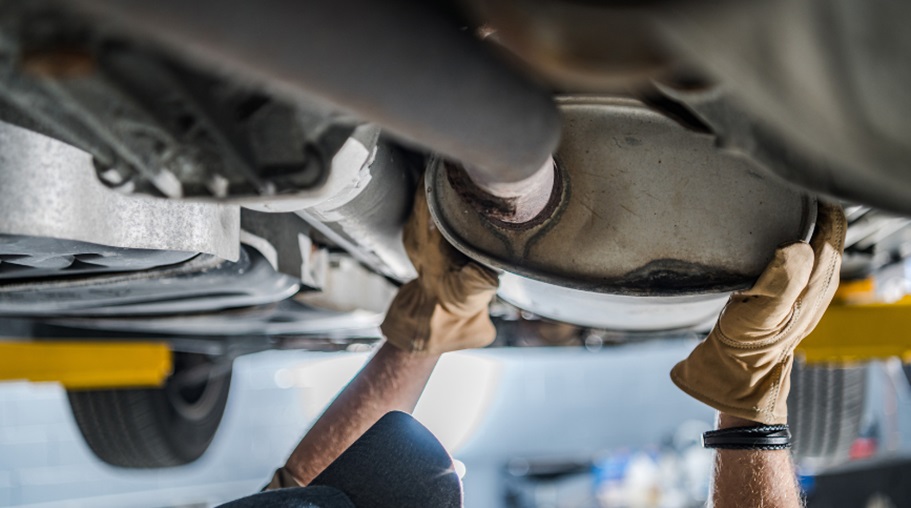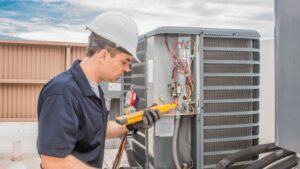
When selecting a portable exhaust system, it’s essential to consider specific features that will enhance both efficiency and usability in your workspace. Portable exhaust systems offer flexibility, particularly in settings that require a clean, ventilated environment without the limitations of fixed installations. A well-chosen portable exhaust system can effectively reduce fumes, maintain air quality, and improve overall safety, making it a valuable investment for both small and large operations alike. Understanding what features to prioritize will help you find a system that meets your unique needs.
Why Portability Matters in Exhaust Systems?
In many industries, including automotive repair and metalworking, fumes and harmful particles can be a constant challenge. Having a mobile exhaust system allows workers to quickly adjust ventilation based on changing needs, significantly improving workplace flexibility. To learn about how portable exhaust systems benefit smaller workshops, read this article.
Here are the key features to prioritize in a portable exhaust system:
1. Ease of Movement and Setup
A portable exhaust system is most effective when it is genuinely mobile and easy to maneuver around the workspace. Look for units equipped with sturdy wheels and a well-balanced structure, ensuring they can be quickly relocated without much effort. Additionally, consider systems with lightweight yet durable materials, as these allow for more frequent repositioning while maintaining stability.
2. Effective Filtration System
The filtration capability of an exhaust system is vital in capturing contaminants and improving air quality. Some models come with multi-layer filters, which are especially useful in capturing fine particles, dust, and hazardous fumes. If your work environment involves exposure to toxic substances, prioritize systems with high-efficiency particulate air (HEPA) filters or other specialized filtration technology designed to handle specific pollutants.
3. Adjustable Suction and Airflow Control
Different tasks require varying levels of exhaust power. An ideal portable exhaust system should offer adjustable suction levels or airflow control, allowing operators to customize the settings based on the demands of each task. This flexibility not only ensures better performance but also helps conserve energy when full power isn’t needed.
4. Durability and Build Quality
Given that portable exhaust systems may be frequently moved and exposed to harsh conditions, durability is essential. Look for systems with a solid construction, particularly models that use corrosion-resistant materials for longevity. A well-constructed system minimizes maintenance and replacement needs, saving both time and money in the long run.
5. Compact Design and Space Efficiency
In smaller workshops or areas with limited space, a compact exhaust system is a huge advantage. Portable models are often designed to fit tight spaces without compromising on performance. Opt for units that are slim and can be tucked away when not in use to save valuable floor space. This feature is particularly valuable for shops or workstations that require easy storage.
6. Low Noise Output
Excessive noise from equipment can disrupt workflow and affect focus. Many portable exhaust systems now feature noise reduction technology, minimizing sound levels during operation. Low-noise models help maintain a comfortable working environment and are especially beneficial in settings where noise levels must be kept low for communication and concentration.
7. Cost-Effectiveness and Energy Efficiency
A portable exhaust system should offer a balance between efficiency and operational costs. Look for units with energy-efficient motors and smart energy-saving features, which help to keep electricity costs down without sacrificing performance. This aspect is particularly critical for businesses operating on a budget, as it ensures that the exhaust system remains a cost-effective solution over time.
8. Easy Maintenance and Filter Replacement
Regular maintenance is necessary to keep any exhaust system functioning at peak efficiency. Portable units that allow for easy access to filters and other components can simplify this process. When selecting a system, prioritize models that provide straightforward instructions for cleaning and replacement, reducing downtime and ensuring continuous air quality management.
Making the Right Choice for Your Workspace
Investing in a portable exhaust system that meets all these criteria can significantly improve your workspace’s air quality and overall functionality. For those in smaller, specialized environments, the right choice can make daily operations safer and more comfortable. By carefully evaluating the features that matter most to your workspace, you’ll be better equipped to select a portable exhaust system that not only meets immediate needs but also offers lasting value.
Conclusion
Selecting the right portable exhaust system for your workspace is essential for maintaining air quality and ensuring safety. By prioritizing features such as ease of movement, effective filtration, adjustable airflow, and noise reduction; you can invest in a system that meets your needs and adapts to your work environment. A well-chosen portable exhaust system can improve both efficiency and flexibility, making it a valuable asset for any workspace.


